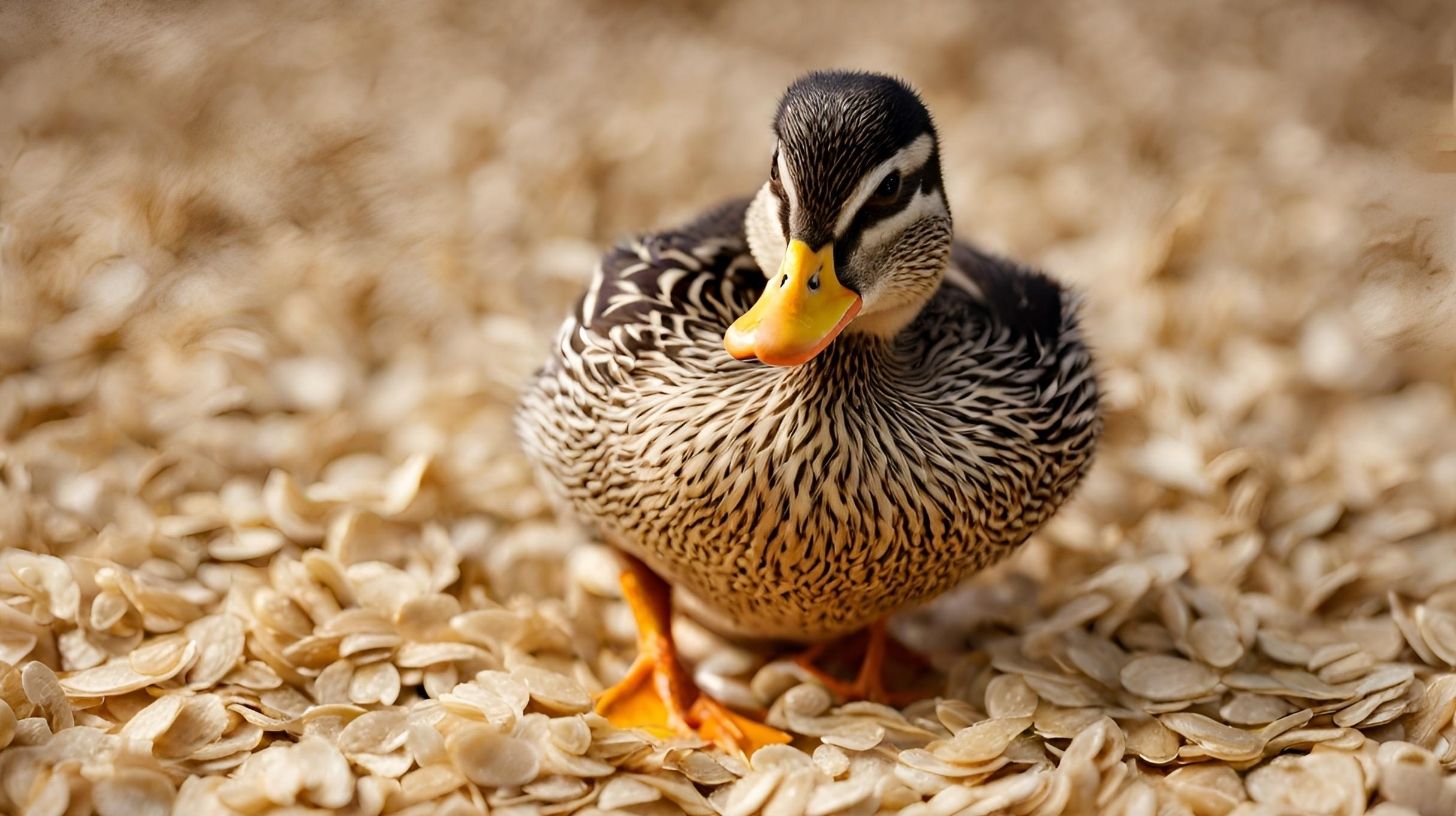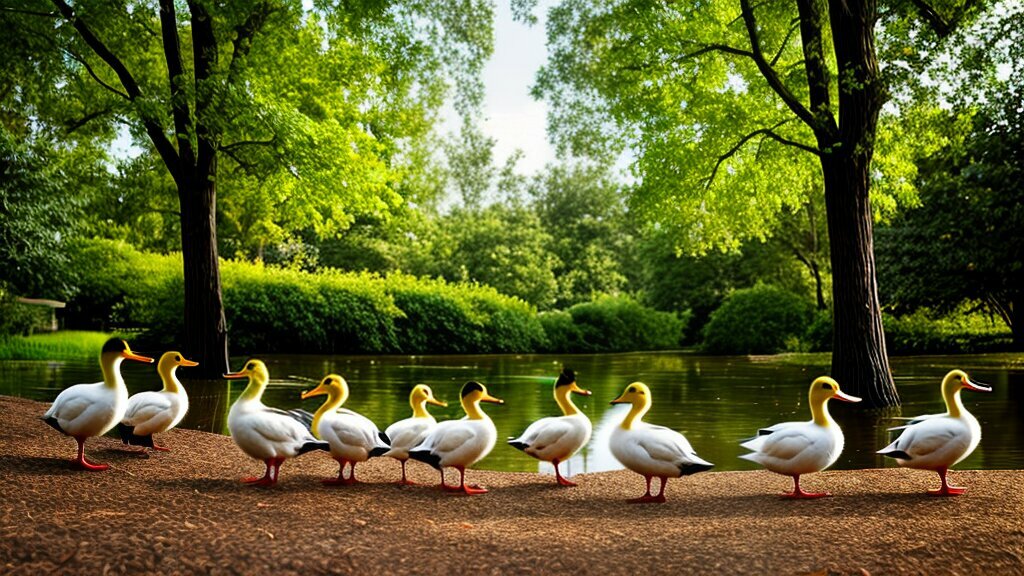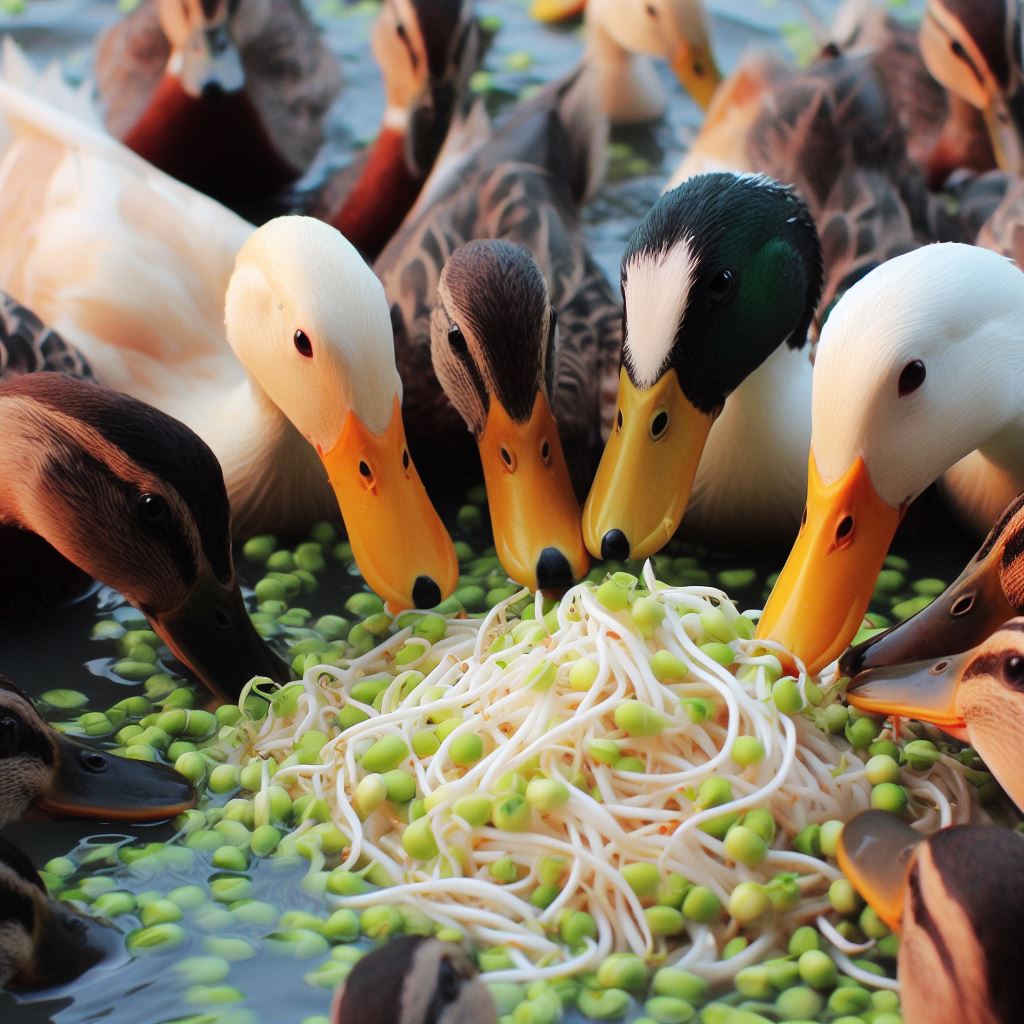Do Ducks Have Eyelashes? Fun Facts and Insights

Table of content:
Many people don’t realize that ducks actually have eyelashes framing their eyes. While not immediately obvious from a distance, a close-up view reveals delicate yet defined lashes on both the upper and lower eyelids. So why do ducks need eyelashes? What purpose could they possibly serve for an aquatic bird?
As it turns out, ducks’ eyelashes serve some important functions related to protecting their eyes. In this article, we’ll take a closer look at ducks’ eyelashes, why they need them, and how they compare to the eyelashes of other animals.
Why Do Ducks Have Eyelashes?
For ducks, eyelashes play a protective role in keeping their eyes clear and healthy in their wet, dusty environments. Here are some of the key reasons ducks need eyelashes:
Keeping Eyes Clear of Debris
Ducks spend a lot of time in and around water. Without eyelashes, dust, dirt, and moisture could easily get into their eyes and cause irritation or infection. The eyelashes help block debris and keep ducks’ eyes clear. Even a thin layer of tiny feathers along the eyelid provides extra protection from particles entering the eyes.
Protection from Wind and Waves
Eyelashes also shield ducks’ eyes from wind and water movement while they are swimming, diving, or flying. The lashes diffuse airflow around the eye and divert water droplets away. This prevents the eyes from drying out or becoming damaged.
Spreading Oil and Moisture
Ducks secrete oil from a gland near their tails which helps coat and waterproof their feathers. They spread this oil over their feathers using their bills. The eyelashes help spread oil and moisture evenly across the eye area as well, keeping the surface smooth and water resistant.
Sensitivity to Light
Thicker eyelashes at the top lid provide shade and cut down on bright sunlight reflecting off the water. This allows ducks to see comfortably even on brilliantly sunny days. The lashes help control how much light enters the eye, preventing overstimulation.
So while duck eyelashes may seem like a small detail, they are vitally useful adaptations for the ducks’ wetland lifestyle. The lashes protect their vision by keeping debris out and moisture in.
What Do Duck Eyelashes Look Like?
Now that we know why ducks need eyelashes, what do their eyelashes actually look like up close?
The lashes along the upper and lower eyelids of ducks are made up of short, fine feathers. They are arranged in neat rows of tiny hairs. The lashes range in color from black to gray to white depending on the duck’s plumage.
On some ducks like the Wood Duck, the eyelashes are boldly visible with thick black fringe. On others like the Ruddy Duck, the pale lashes blend more subtly into the face. But all species have them to some degree.
The lashes are short, between 0.10 to 0.15 inches long on average. They are rigid and sturdy compared to flexible human eyelashes. The lashes tend to be evenly spaced and uniform in length.
Male ducks often have longer, thicker eyelashes than females. This extra fringe provides added eye protection and also highlights the male’s eye markings to attract mates.
Baby ducklings hatch with very short fuzzy eyelashes that grow out quickly as they mature. At just a few weeks old, their lashes are nearly full grown.
Up close, it’s clear that duck eyelashes are perfectly adapted for their wet, active lifestyle. The lashes make a huge difference in keeping their eyes healthy.
Do Other Birds Have Eyelashes?
Ducks are not the only birds to have eyelashes. Lots of avian species evolved lashes and feather tufts around their eyes as useful adaptations. Which other birds have noticeable eyelashes?
Water Birds
Many aquatic birds that spend time on the water have visible eyelashes just like ducks. This includes geese, swans, loons, grebes, coots, and some shorebirds. The lashes keep their eyes clear of water and particles while swimming and diving.
For example, mute swans have elegant black eyelashes. Loons have thick lashes to see clearly even when diving deep below the water’s surface. American coots have white feathers edging both the upper and lower lids.
Birds of Prey
Raptors like hawks, eagles, and owls have bristly eyelashes and raised feathers above their eyes. These help shade the eyes from above and prevent glare while spotting prey.
Peregrine falcons, for instance, have noticeable white lashes framing their piercing eyes. Great horned owls have striking black-and-white striped eyelashes that extend into points.
Songbirds
Many songbirds have tiny, thin eyelashes. Examples include chickadees, cardinals, mockingbirds, sparrows, and finches. These lashes aren’t very visible from afar but can be seen up close. They offer a bit of eye protection and shade.
Some types like ravens have more prominent lashes. Even small hummingbirds have microscopic lashes!
So while ducks have the most noticeable eyelashes, many other birds have them too in various sizes. They help protect vision and control light intake based on the bird’s habitat and habits.
Do Other Animals Have Eyelashes?
Birds aren’t the only animals to have eyelashes. Lots of mammals, reptiles, fish, and invertebrates also evolved lashes around their eyes for protection. Which animals have prominent lashes?
Mammals
Most mammals have visible eyelashes much like humans. Cows have long, thick lashes to keep flies away from their eyes while grazing. Horses have long lashes to diffuse harsh sun and wind on open plains. Deer have light, wispy lashes that help their large eyes see through dense forests.
Dogs, cats, rabbits, and many other domestic mammals have eyelashes. Wild mammals like lions, bears, and pandas also have fuzzy lashes. Marine mammals even have a few small lashes, like the stubby lashes seen on dolphins and seals.
Reptiles
Lots of reptiles from snakes to lizards have developed eyelashes over time. For instance, chameleons have chunky eyelashes to protect their eyes when moving through branches. Geckos have translucent lashes to shield their large nocturnal eyes. Horned lizards have spiky eyelashes above their eyes for added protection.
Turtles and tortoises don’t have true eyelashes. But they do have protective scales over their eyes that help keep out debris.
Fish
Most fish don’t have eyelashes since they don’t have eyelids! But some unique fish like bettas and gobies have movable flaps that cover their eyes when asleep or feeding. These flap “eyelids” are edged with tiny lashes to ward off sediment in the water.
Sharks also have a nictitating membrane that sweeps over their eyes which may have tiny eyelash-like fringes in some species.
Invertebrates
Even some invertebrates like arthropods and mollusks have primitive proto-eyelashes! For example, crabs and shrimp have delicate lashes along with their complex eyes. Slugs and snails also have tiny lashes on their ocular tentacles.
While totally different in structure from mammalian lashes, these tiny hairs still help protect invertebrates’ sensitive eyes.
So eyelashes occur all across the animal kingdom, from mammals to birds to reptiles to aquatic creatures! They serve a universal purpose – protecting eyes from damage.
How Many Eyelashes Do Ducks Have?
Part of what makes ducks’ eyelashes so unique is their orderly, uniform rows along the eyelids. But just how many individual lashes do ducks have lining their eyes?
The exact number can vary based on the breed and individual:
- On average, ducks have between 200-400 lashes on the upper lid and 50-100 on the lower lid.
- Some ducks like Call Ducks have up to 600 upper lashes and 150 lower lashes for extra eye protection.
- Male ducks tend to have 15-25% more lashes than females.
- Baby ducklings start with fewer lashes that multiply as they mature.
- Wild duck species adapted to windier environments tend to have more lashes.
- Ducks that live on water have more eyelashes than upland duck species.
While it’s hard to get an exact count, estimates for most ducks total between 250-500 individual eyelashes framing their eyes. That may not seem like a lot compared to humans, but for ducks they are the perfect number and length to keep their eyes healthy!
Do Female Ducks Have More Eyelashes Than Males?
Many people assume that female ducks would have more prominent eyelashes, as an attractive feature like human eyelashes. But actually, male ducks tend to have longer, thicker lashes than females of the same species.
This is because male ducks use their eyelashes for courtship displays to attract mates. Breeds where males have especially bold eyes like Mandarin Ducks rely on eyelashes as visual cues.
The male ducks’ extra lashes also provide added protection when defending territory and during mating tussles. Male ducks are often more active and aggressive than females as well.
So while human fashion emphasizes women’s lashes, for ducks the males sport the bold eyelash look! The female’s lashes are still fully functional but more delicate and subtle.
Do Baby Ducks Have Eyelashes?
Baby ducklings hatch out with eyelashes framing their bright little eyes. Their tiny lashes help protect their sensitive eyes right from day one.
Newly hatched ducklings have short fuzzy lashes, between 0.5 to 1 mm long. Their lashes are too small to be very visible at first.
As ducklings grow over their first 2-3 weeks, their juvenile eyelashes rapidly lengthen. By two weeks old the lashes are usually full grown.
Ducklings’ eyelashes are vital for keeping out debris in the first few days when they are extremely vulnerable. The lashes also help ducklings follow their mother closely through tall grass or water.
Within a month, ducklings have full adult eyelashes. The lashes develop quickly along with the ducklings’ swimming, foraging, and flying skills that all rely on clear vision.
So while subtle at first, ducklings’ tiny eyelashes are crucial for their development. Like adult ducks, their lashes protect their eyes from their very first days.
Do All Types of Ducks Have Eyelashes?
Ducks come in over 120 different species worldwide. Do all duck species have eyelashes regardless of their habitat and characteristics?
The answer is yes – all known duck species have noticeable eyelashes in varying sizes. Here are some examples:
- Mallards have thick black lashes, more prominent on the males.
- Canvasbacks have black lashes on the upper lid and pale lashes below.
- Ruddy ducks have such light, faint lashes they can be hard to spot.
- Harlequin ducks have dramatic white lashes on black plush feathers.
- Muscovy ducks have thick lashes with bare skin around the eyes.
- Mergansers have shaggy crests over the eyes with bold lashes peeking out.
From the tiny Green Pygmy Goose to the massive Northern Shoveler, they all have adapted eyelashes. Even domestic breeds like Pekins and Runners have lashes.
The lashes help ducks of every shape and size see clearly while floating, diving, dabbling, or flying. So eyelashes appear to be a consistent feature across the entire duck family.
Final Thoughts
Ducks may seem like simple, common birds at first glance. But a closer look reveals the intricate detail of their specialized eyelashes. These delicate yet durable feathers exemplify the amazing adaptations ducks have evolved for aquatic life.
Eyelashes may just seem decorative on humans. But for ducks, they serve the critical purpose of protecting their eyes from water, particles, and sunlight. Eyelashes help healthy wild ducks survive in diverse wetland environments worldwide.
So next time you spot a duck paddling across a pond or taking flight, take a moment to appreciate its carefully designed lashes. These tiny feathers play a big role in maintaining ducks’ keen vision for finding food and avoiding danger. Ducks’ eyelashes prove that small details can have a huge impact on animals’ survival.
Welcome. I’m Adreena Shanum, the proud owner of this website, and I am incredibly passionate about animals, especially poultry. I founded adreenapets.com as a labor of love, stemming from my desire to share my knowledge and experiences with poultry enthusiasts worldwide.




